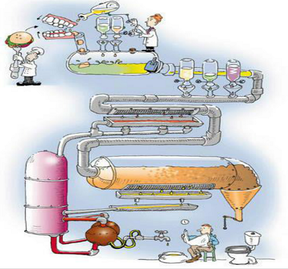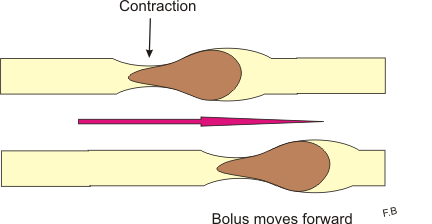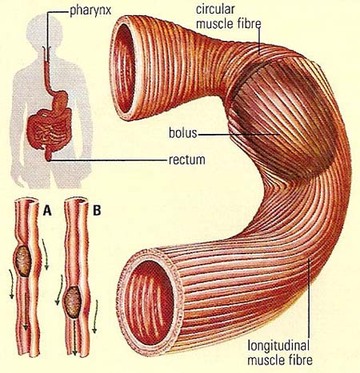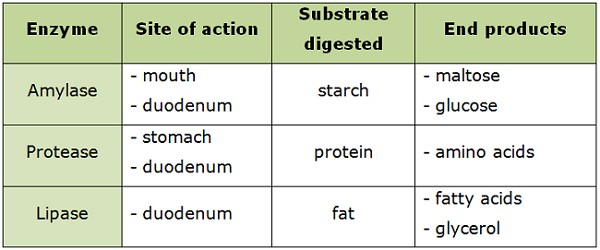# 55 Mechanical and chemical digestion
Food that we ingest is mainly made up of large, insoluble molecules that can not be absorbed through the gut wall. It needs to be changed into small, soluble molecules.
Mechanical digestion is the physical process of preparing the food for chemical digestion.
Chewing
Mechanical digestion, performed bye the teeth à pieces of food are mixed with saliva and become smaller à easier to swallow and have a larger surface area.
- It involves chewing (in the mouth), mixing, churning (in the stomach and intestine) and segmentation (in the intestine).
- Large pieces of food are breaking down into smaller pieces à increases the surface area of the food.
- Bile physically digests fats by emulsifying them – turning them into small droplets with a large surface area.
Chewing
Mechanical digestion, performed bye the teeth à pieces of food are mixed with saliva and become smaller à easier to swallow and have a larger surface area.
Peristalsis
- The walls of the alimentary canal have an inner, circular muscle fibre coat and an outer, longitudinal muscle fibre coat.
- As the ball of food (bolus) formed in the mouth enters the pharynx, a reflex action is initiated.
- This produces slow, wave-like contractions in the walls of the esophagus and later along the whole length of the tract (peristalsis).
- Peristaltic waves involve the contraction of the circular muscle fibres behind the bolus (A) and their relaxation in front of the bolus.
- Longitudinal muscles provide the wave-like action. The two functions together push the ball down the tract (B).
Misconceptions: Chewing food does not involve breaking down large molecules into small molecules; it only breaks down large pieces into smaller pieces, giving a larger surface area for enzymes to work on.
Video Peristalsis
Video Peristalsis
Chemical digestion
- Involves breaking down large, insoluble molecules into small, soluble ones.
- Enzymes speed up the process. They work efficiently at body temperature (370 C) and at suitable pH.
- The main places where chemical digestion happens are the mouth, stomach and small intestine.






